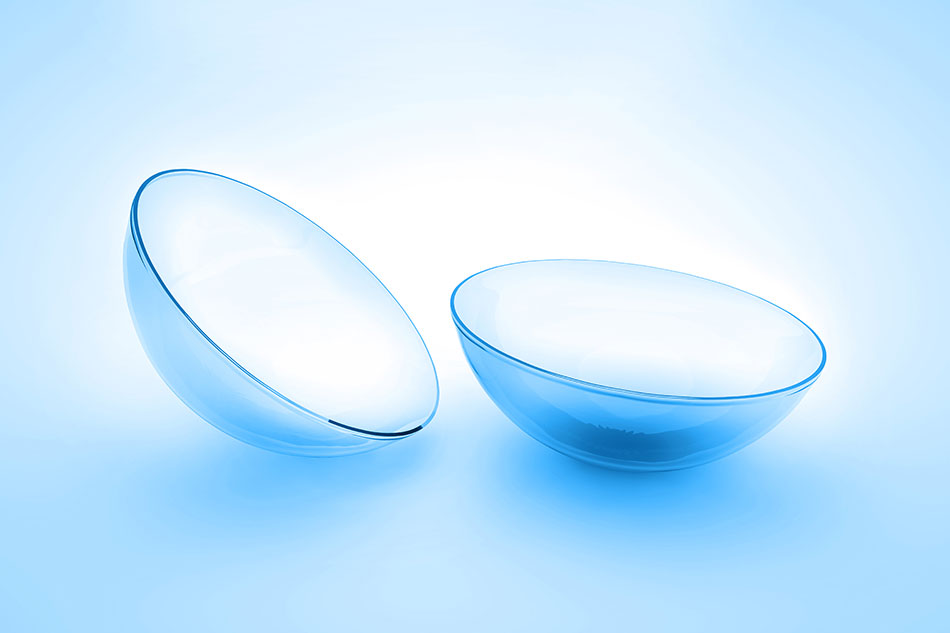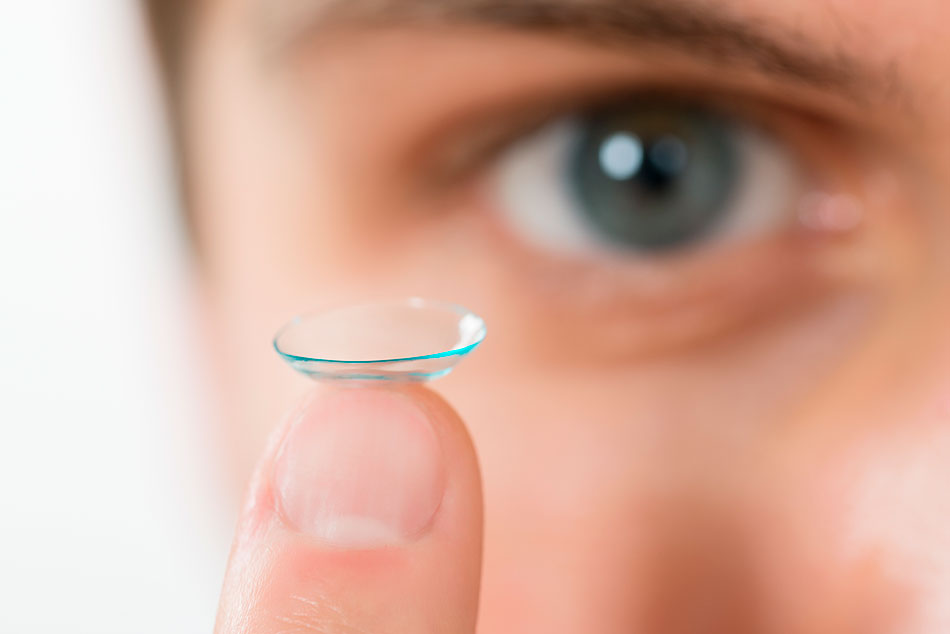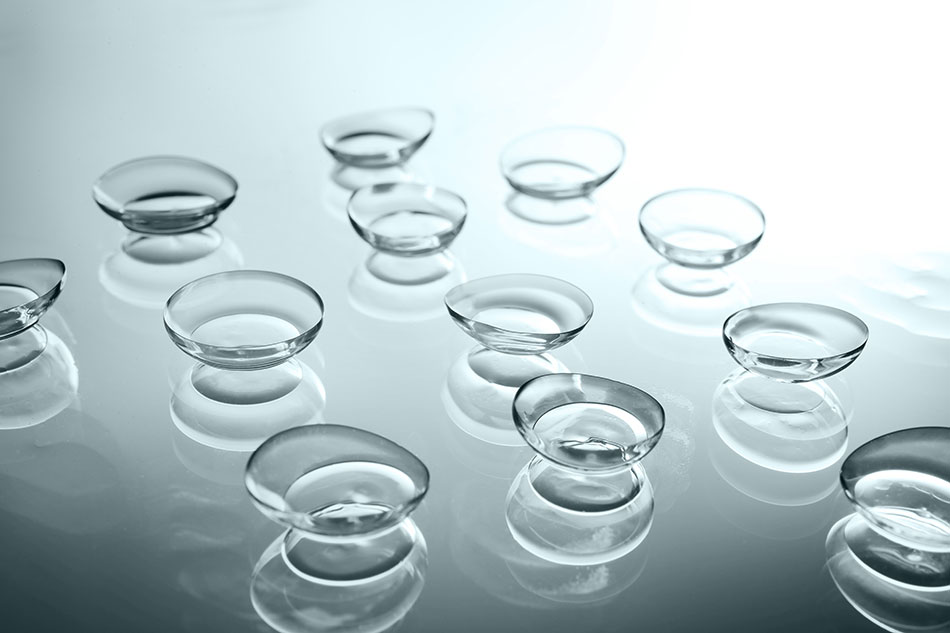Uncover the Mystery: How Do Contacts Work?

Contact lenses are an incredible invention; tiny lenses that people wear directly on the eye to correct vision. According to the Ontario Association for Optometrists, there are several benefits to wearing contact lenses. These include the fact that they don't fog up, and don't inhibit sports. But how do contacts work? Let’s take a look at some of the science behind the inner workings of contacts and what to look for in a lens.
History of Contact Lenses
The invention of contact lenses goes back to Leonardo Da Vinci in the early 1500s. DaVinci was the first to use a device to improve someone’s vision. He created the first lens using water and a funnel, which proved to be impractical. Based on Da Vinci’s principle, Rene Descartes produced a tube in 1636 that filled with water. He placed this filled tube directly on the eye. Once again, it was not a process most people wanted to go through.
There were other attempts at making contact lenses throughout the centuries. It was not until 1887 when F. A. Mueller, a manufacturer of artificial eyes, succeeded. He constructed these early lenses out of glass, which were uncomfortable.
In 1952, professors at the Institute of Chemical Technology in Prague discovered a polymer plastic that was perfect for eye lenses. One, named Otto Wichterle, and his wife worked in their kitchen making and testing 5,500 pairs of contact lenses. Finally, in the 1960s, they got the attention of the science community. Bausch & Lomb licensed their technology and launched their Soflens in 1971. In the first year of production, the company sold 100,000 pairs and the rest is history!
How Are Soft Contact Lenses Made?

There are two ways to make soft contact lenses — lathe cutting and injection molding.
Lathe cutting involves placing soft contact lens disks on a spinning shaft that rotates 6,000 times a minute. Meanwhile, computerized cutting tools shape the lenses. They are then polished and hydrated to soften them, and finally tested for quality assurance before packaging.
Injection molding takes soft contact lens material and heats it until it is a liquid. Then, nozzles inject the liquid into pressurized molds. These molds have the precise prescription measurements. Once the lenses are the right shape, they are polished, hydrated and tested for quality.
How Do Contacts Work?
Contact lenses work in much the same way as prescription glasses. Contacts change the direction of light coming into the eye so that it focuses on the retina on a single focal point. In other words, contact lenses work by fine-tuning the light into your eyes. It’s similar to a magnifying glass focusing a beam of sunlight on one specific spot.
The lens sticks to the tear fluid on the surface of each of your eyes. This allows the contact to move with your eyeball for perfect vision anywhere you look. The excellent peripheral vision provided by contact lenses is one of their biggest benefits over eyeglasses.
There are two main categories for contact lenses: soft and rigid gas permeable.
Soft contact lenses are made out of flexible plastic polymers called hydrogels. These are the most common type of contact lenses.
Rigid gas permeable lenses, or RGP for short, are necessary for certain vision problems like severe astigmatism. Although they can scratch your eyes and take time to get used to, they are very durable.
Nearsighted or Farsighted

Contact lenses work differently for nearsightedness and farsightedness.
Nearsightedness, also known as myopia, means that objects at a distance appear blurry. The reason for this is that light points in front of the eye's retina and not on it. Both contact lenses and glasses can divert the light to a focal point directly on the retina, where it should be.
Farsightedness, called hyperopia, means that a person can see fine at a distance but close up objects are blurry. This makes reading and looking at hand-held items difficult. This condition is due to the eye's lack of power to focus the incoming light, which does not form a distinct focal point on the retina. Contact lenses converge the light rays into a single beam of light for increased focus power.
Different contact lenses can correct each of these vision problems.
Contact Lens Shape
A contact lens has both an inner and an outer surface shape. The shape depends on whether the lens treats myopia or hyperopia. It also depends on the shape of the patient's eye.
Inner Contact Lens Surface Shape
The inside curvature of a contact lens needs to stick seamlessly to the cornea. The natural moisture of your eye helps keep the lens in place. Optometrists determine the shape of a person's eyes through various measurements and tests. The shape measurement is part of your contact lens prescription.
Outer Surface Shape
The outer shape of the lenses affects how contacts work. It is the outer surface that focuses the incoming light. This shape is measured in diopters and is part of your prescription. If you are nearsighted, your prescription will have a minus sign. If you are farsighted, it will have a plus sign. The exact diopter measurement depends on how impaired your vision is.
Types of Contact Lenses

Contact lenses are not all the same. There are various types of lenses for different needs. For example, there are contacts for astigmatism called toric lenses. Toric lenses have extra weight at the bottom edge to correct the irregular curve of the cornea that causes astigmatism. Contacts can also have monovision, bifocals, and multifocal options.
Besides the various vision needs, contact lenses also take into account how often you want to change your contacts. Daily contacts are disposable and thrown out after each use. Weekly, biweekly, or monthly options are also available.
There you have it, now you know the answer to the question: “how do contacts work?” And you may have learned a little about their history too. Contact lenses have come a long way since Da Vinci’s initial idea and the future of contacts looks bright.
